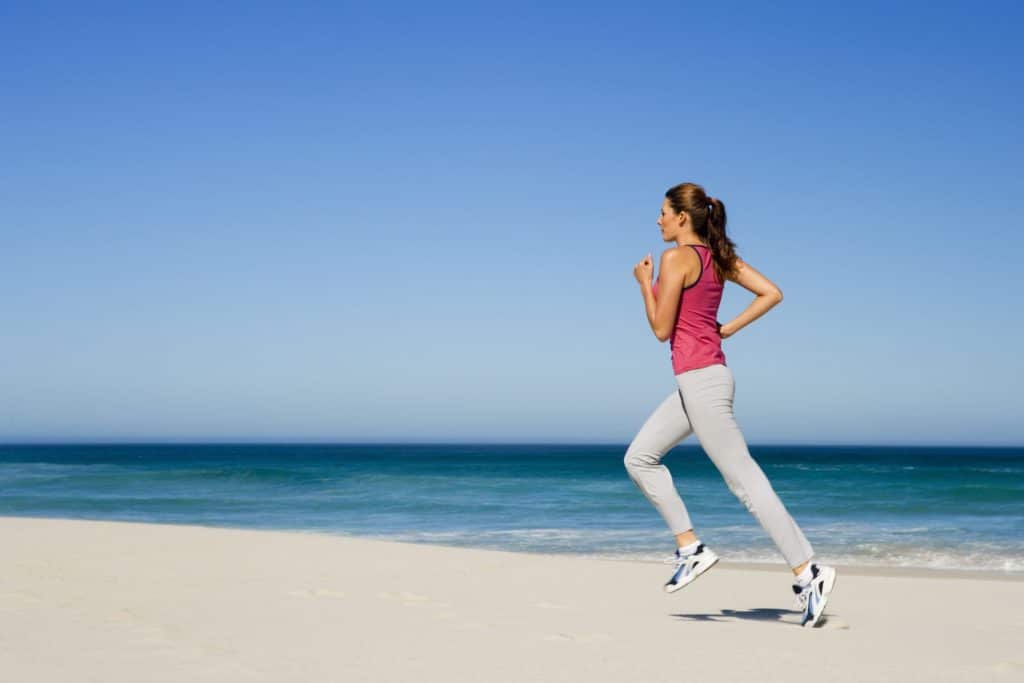Exercise is any bodily activity that enhances or maintains physical fitness and overall health and wellbeing. The importance and benefits of exercise cannot be over-emphasized. The top 10 benefits of exercise are as follows:
1. Fitness
Physical fitness is your ability to carry out tasks such as sports, occupations and daily activities without undue fatigue. Exercise helps you achieve fitness. Other factors that contribute to physical fitness are a balanced diet and sufficient rest. Physical activities early in life have been shown to improve performance in sports and have better fitness levels later in life.
Studies have also shown that exercising in middle age leads to better physical ability later in life.
2. Immune System
The immune system is the body’s defense against infectious organisms and other invaders. Through a series of steps called the immune response, the immune system attacks organisms and substances that invade body systems and cause disease.
Exercise also helps to boost our immune system and so reduces the chance of developing opportunistic infections such as flu, colds and also certain serious health conditions such as heart disease, diabetes and cancers.
3. Cardiovascular System
The cardiovascular system is made of the blood and blood vessels and the heart which helps to pump the blood around the body. Exercise has been shown to improve the overall well-being of the cardiovascular system. Exercise reduces LDL cholesterol that blocks the arteries. It also reduces blood pressure so it lowers the stress on your heart.
Exercise helps to increase the heart rate and reduces the risk of developing coronary artery disease.
4. Brain Function
The beneficial effect of exercise on brain function is well documented. Exercise helps to improve stress coping, memory, neurological activity, and cognition.
The benefits of exercise on cognition have important implications for improving academic performance in children and college students, improving adult productivity, preserving cognitive function in old age, preventing or treating certain neurological disorders, and improving the overall quality of life.
5. Depression
Several medical research publications have indicated that exercise has marked and persistent antidepressant effects in humans. Depression often results when a preexisting vulnerability is activated by stressful life events and as exercise serves to inhibit negative affect and decrease biological response to stress, it is a potent antidepressant.
Continuous exercise over the long term leads to improvements in mood and self-esteem.
6. Muscle Strength
Exercise improves muscle strength and staying active keeps muscles strong and joints, tendons and ligaments flexible, allowing you to move more easily and avoid injury.
Resistance training and subsequent consumption of protein-rich meals promote muscular growth and strength.
7. Weight Loss
Being overweight carries with it the tendency to develop serious health conditions and a reduction in the fitness of the individual. Exercise can help to prevent excess weight gain or help maintain weight loss. When you engage in physical activity, you burn calories. The more intense the activity, the more calories you burn.
Related: Bariatric Surgery Cost
8. Better Sex Life
Exercise has been shown to boost sex drive and performance. It can also improve sexual pleasure, as well as increase the frequency of sexual activity.
Regular exercise may lower the risk of erectile dysfunction (ED) in men. For those who already have ED, exercise may help improve their sexual function. In women, exercise may increase sexual arousal.
9. Sleep
Exercise can help improve sleep quality in people with insomnia. Insomnia is often linked with elevated anxiety and depression. It is better to exercise and monitor your body than after a year to search on the Internet where to buy Ambien online. As stated earlier, exercise is a potent antidepressant hence; exercise may reduce insomnia and lead to better sleep quality.
10. Aging
Moderate levels of exercise have been correlated with preventing aging by reducing inflammatory potential. Exercise helps you live healthier and longer.
Types of Exercise
Physical exercises are generally grouped into three types, depending on the overall effect they have on the human body:
1. Aerobic Exercise

benefits of exercise
This is any physical activity that enables the body to utilize more oxygen. The objective of aerobic exercise is to increase cardiovascular endurance. Examples of aerobic exercise include:
- running
- cycling
- swimming
- brisk walking
- skipping rope
- rowing
- hiking
- dancing
- playing tennis
- continuous training
2. Anaerobic Exercise

anaerobic exercise
This is a physical exercise that involves strength and resistance training. The goal is to increase muscle mass, bone density, balance, and coordination. Examples of anaerobic exercise include:
- push-ups
- pull-ups
- lunges
- squats
- bench press.
3. Flexibility Exercise

Flexibility Exercise
The goal is to improve the range of motion which can reduce the chance of injury. Examples of flexibility exercises include:
- Shoulder and upper arm stretch
- Calf stretch
- Yoga
Exercise offers incredible benefits that can improve nearly every aspect of your health from the inside out. Regular physical activity can increase the production of hormones that make you feel happier and help you sleep better.
It can also improve your skin’s appearance, help you lose weight and keep it off, lessen the risk of chronic disease and improve your sex life.
Whether you practice a specific sport or follow the guideline of 150 minutes of activity per week, you will inevitably improve your health in many ways.
More: History of Surgery